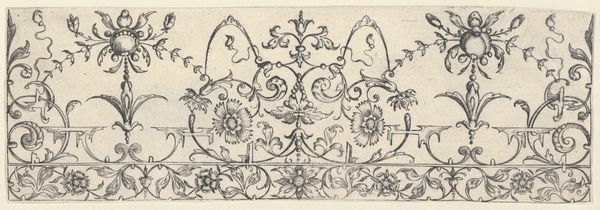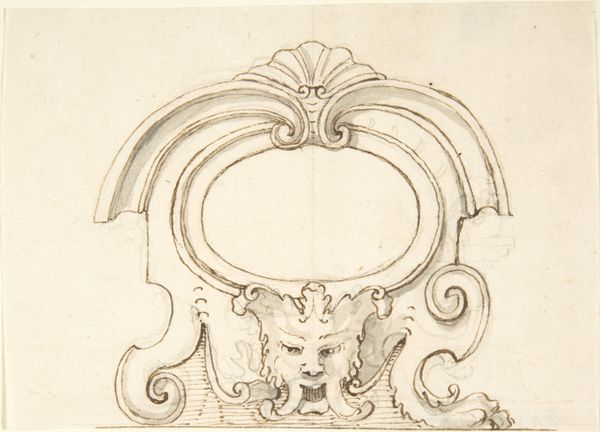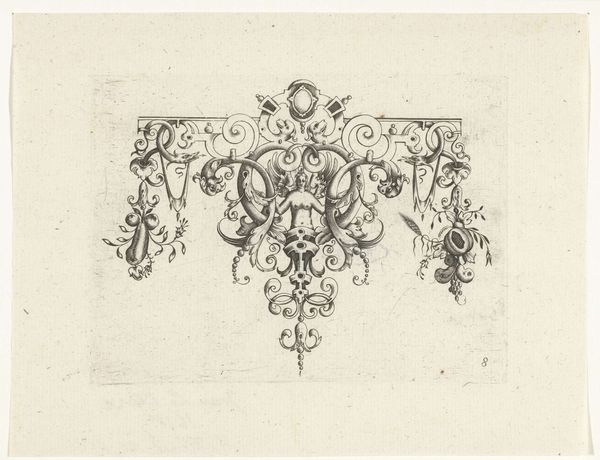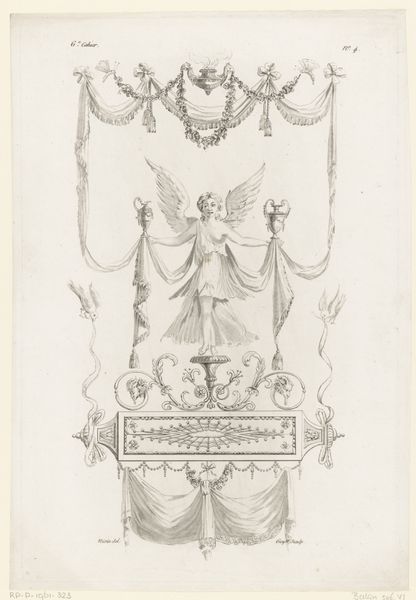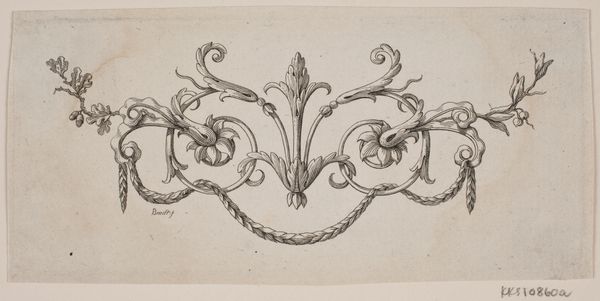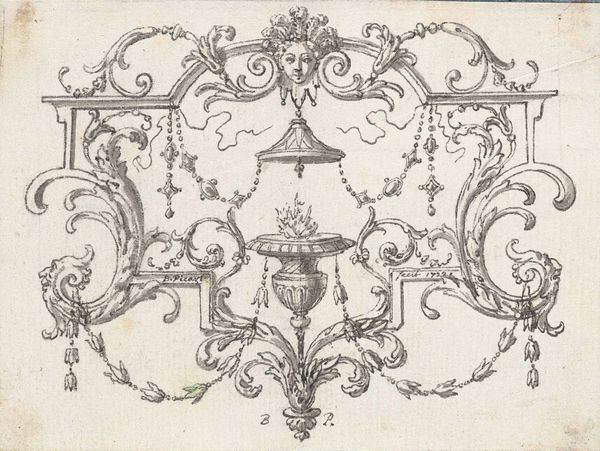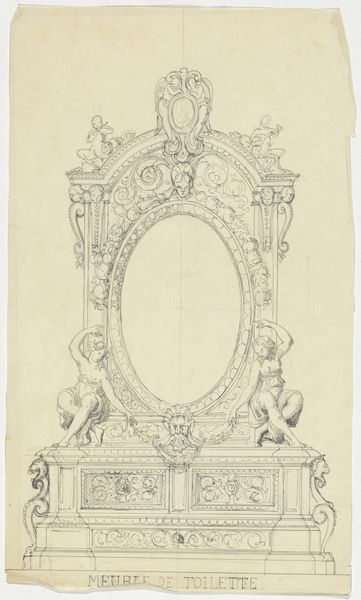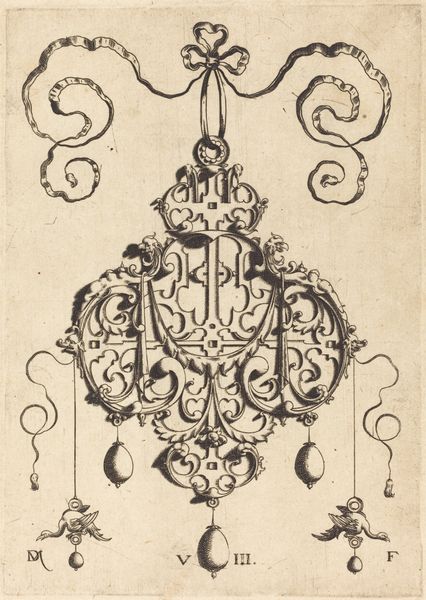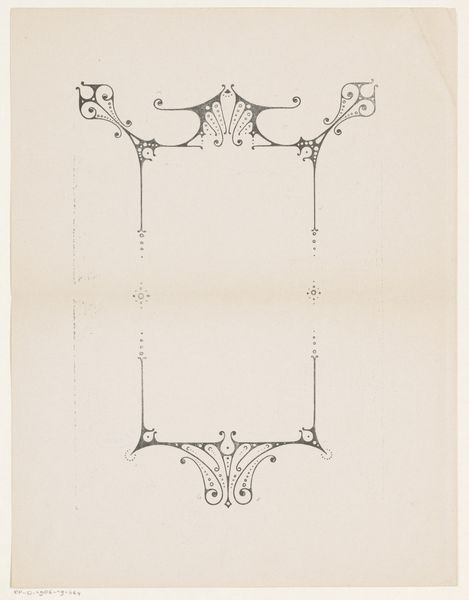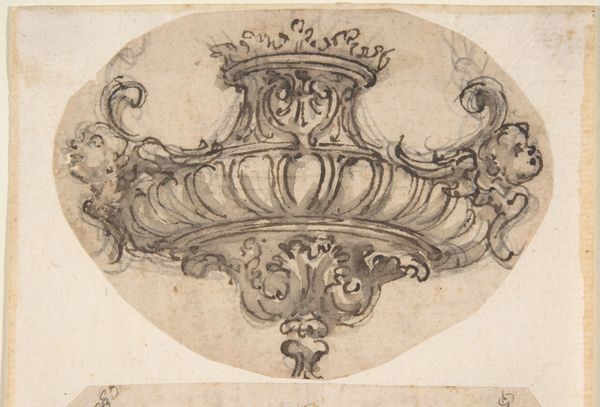
drawing, print, paper
#
drawing
# print
#
paper
#
geometric
#
line
#
academic-art
Dimensions: sheet: 4 11/16 x 13 11/16 in. (11.9 x 34.8 cm)
Copyright: Public Domain
Editor: This is "Motif for an Iron Balcony," a 19th-century drawing and print on paper. It feels like an architect's blueprint, showcasing intricate geometric designs. What aspects of its creation or context strike you most? Curator: I see here an excellent opportunity to consider the often-blurred boundaries between fine art and the functional arts. Look at the meticulous linework – it speaks to a tradition of artisanal skill, of the specialized labor required to produce such designs. Where would you place this "motif" on the spectrum of art and design, considering its social purpose? Editor: Well, it was a design for an iron balcony. Is that inherently "less" than art made for galleries? Curator: Precisely. And who crafted the ironwork itself? Was it a collaboration, a master-apprentice relationship, or a division of labor within a larger workshop? Thinking about the *making* broadens our understanding, beyond the pure aesthetics. Also, consider who this balcony was for. Editor: You mean like, who would have commissioned such work? Someone wealthy enough to afford ornate ironwork, perhaps signaling their status? Curator: Exactly. The choice of materials, the level of ornamentation, speaks volumes about consumption and social standing. An iron balcony wasn't merely functional; it was a declaration of wealth and taste, crafted and erected through a complex web of economic relations. Are you getting a different sense about its historical role? Editor: Definitely! It is so much more than just a drawing. Curator: By examining these material aspects – the drawing, the iron, the social dynamics of production and consumption – we gain a more nuanced perspective on the art itself. Editor: This makes me appreciate design work so much more, thanks for that!
Comments
No comments
Be the first to comment and join the conversation on the ultimate creative platform.
